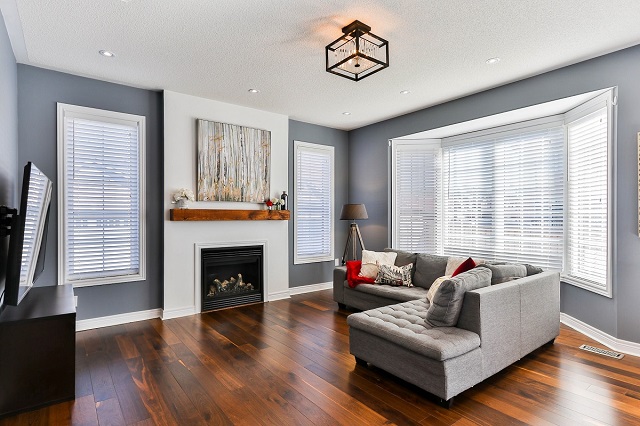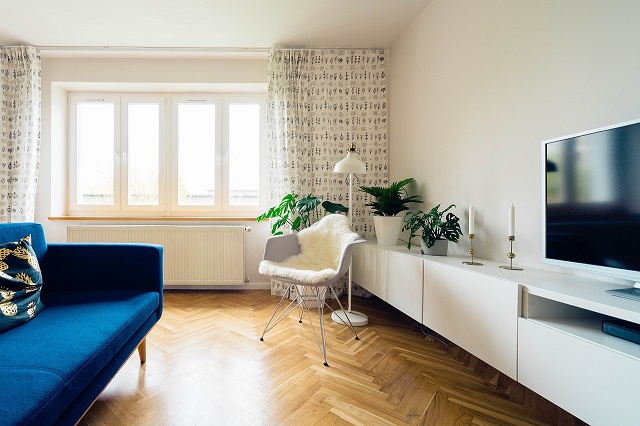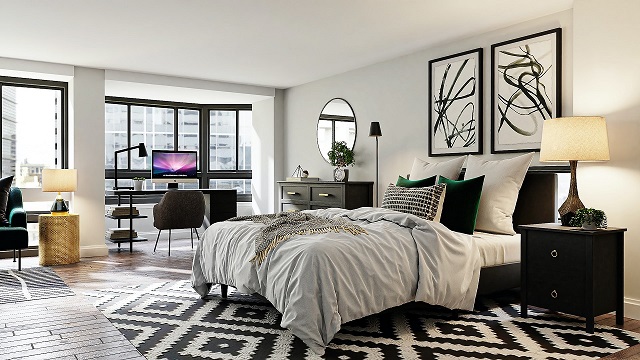Table of Contents
Preparing the textured walls
To ensure a successful painting project on a textured walls, thorough preparation is essential. Begin by examining the surface for any imperfections such as cracks, holes, or loose texture. Use a putty knife to fill in any gaps and sand down rough spots for a smooth base. Dust off any debris with a clean, dry cloth before moving on to the next step.
Once the surface is free of imperfections, it’s crucial to clean the area thoroughly. Use a mild detergent solution and a sponge to remove any dirt, grease, or grime that may affect the adhesion of the paint. Rinse the surface with clean water and allow it to dry completely before proceeding with the painting process.
Choosing the right tools and materials
When embarking on a textured wall painting project, selecting the appropriate tools and materials is crucial for achieving a successful outcome. Start by choosing a high-quality paint that is specifically designed for textured surfaces to ensure better adhesion and durability. Opt for a thicker paint with a satin or eggshell finish to enhance the textured effect and provide a more robust coverage.
Invest in a variety of painting tools such as textured paint rollers, brushes, sponges, and a wide range of paint colors to add depth and dimension to your walls. Consider using a specialty brush or sponge for creating unique textures and designs, and a high-quality roller for applying the base coat evenly. Additionally, make sure to have painter’s tape, drop cloths, and a ladder on hand to protect surfaces and safely reach higher areas. By carefully selecting the right tools and materials, you can set yourself up for a smooth and successful textured wall painting project.
Priming the textured walls
Before applying paint to textured walls, it is crucial to properly prime the surface to ensure a smooth and long-lasting finish. Priming not only helps seal the surface and improve paint adhesion, but it also evens out the texture, making it easier to achieve a professional result.
When choosing a primer for textured walls, opt for a high-quality primer specifically designed for use on textured surfaces. Look for a primer that is formulated to fill in gaps and irregularities in the texture, providing a uniform base for the paint to adhere to. Additionally, consider using a tinted primer that closely matches the color of your top coat to help reduce the number of paint coats needed for full coverage.
Applying the base coat to the textured walls
To ensure a successful painting project on textured walls, applying the base coat is a critical step that sets the foundation for the final result. The base coat serves as the background color that will peek through the textured finish, providing depth and enhancing the overall appearance. When selecting the base coat color, opt for a shade that complements the desired finish and creates a harmonious backdrop for the texture to shine.
Before applying the base coat, thoroughly clean and prepare the textured surface to ensure proper adhesion. Use a high-quality primer specifically designed for textured walls to create a smooth and even base for the paint to adhere to. Apply the primer in even strokes, following the natural texture of the wall to prevent any inconsistencies in the final result. Remember, a well-prepared base coat not only enhances the durability of the finish but also ensures a professional and polished appearance.
Using a roller for even coverage
When using a roller for painting textured walls, it is essential to ensure even coverage to achieve a polished look. Start by selecting a high-quality roller that is suited for the texture of your walls. A thicker nap roller is ideal for rough surfaces, while a thinner nap roller is more suitable for smoother textures. Before beginning to roll the paint onto the walls, it is crucial to load the roller evenly with paint to prevent drips and inconsistencies in coverage.
Once the roller is loaded with paint, apply it to the wall in a W or M motion to evenly distribute the paint. Avoid rolling in random directions, as this can result in streaks and patchy areas on the textured surface. Make sure to overlap each section slightly to blend the paint seamlessly. Additionally, applying light pressure while rolling can help to achieve a smooth and uniform coverage across the textured walls.
Cutting in along edges and corners
When painting a room with textured walls, cutting in along edges and corners is a crucial step to ensure a neat and professional finish. Use a high-quality angled brush to carefully paint along the edges where the wall meets the ceiling, trim, and corners. Take your time to create clean lines, as this will serve as the foundation for the rest of the painting process.
Precision is key when cutting in, so pay close attention to detail and work slowly to avoid any mistakes or smudges on adjacent surfaces. Holding the brush at a slight angle can help you achieve a more precise line, and don’t overload the brush with paint to prevent drips or uneven coverage. By mastering the art of cutting in, you’ll be able to create a polished look that elevates the overall appearance of your textured walls.
Creating texture with a brush or sponge
When it comes to adding texture to your walls, using a brush or sponge can create unique and visually appealing finishes. A brush can be used to achieve a more dramatic and pronounced texture, while a sponge can create a softer and more blended look. Experimenting with different brush strokes or sponge dabbing techniques can help you achieve the desired texture for your space.
To create texture with a brush, load the brush with paint and apply it to the wall in a stippling or swirling motion. This will create depth and dimension, adding visual interest to your walls. For a more subtle effect, use a sponge to gently dab paint onto the surface, building up layers gradually for a layered and textured finish. Remember to practice on a small area first to perfect your technique before tackling larger sections of the wall.
Blending colors for a seamless finish

To achieve a seamless finish when blending colors on textured walls, it is essential to start with the right base coat that will provide a solid foundation for your colors to come together harmoniously. Select colors that complement each other well and consider using shades from the same color family to ensure a smooth transition between hues. Begin by applying the lighter color as the base coat and then layer the darker color on top, blending the two together while the paint is still wet for a seamless look.
When blending colors, it is crucial to work quickly and efficiently to avoid any visible lines or patchy areas. Use a clean, dry brush to gently blend the colors together, using light and consistent strokes to create a gradual transition. Take your time and be patient with the blending process, working in small sections to ensure a uniform finish throughout the entire wall. Remember to step back periodically to assess the overall look and make any necessary adjustments to achieve the desired seamless blend between colors.
Adding depth with multiple layers
To achieve a rich and textured finish on your walls, incorporating multiple layers is key. Layering paints not only adds depth to the surface but also enhances the visual interest of the space. Begin by applying your base coat evenly across the wall, ensuring full coverage before moving on to subsequent layers. Building up layers gradually allows for a nuanced and captivating final result.
As you add additional layers, consider varying the opacity and color intensity to create dimension. Experiment with blending different shades to achieve a harmonious and dynamic effect. The process of layering offers an opportunity to play with light and shadow, ultimately enhancing the overall atmosphere of the room. Take the time to let each layer dry thoroughly before applying the next, ensuring a professional and polished outcome.
Using a dry brush technique
To achieve a unique finish when painting textured walls, employing a dry brush technique can be highly effective. This method involves using a minimal amount of paint on a dry brush to create subtle, intricate details and depth. By lightly dragging the dry brush over the textured surface, you can enhance the existing texture and add visual interest to the overall appearance of the walls. This technique is particularly useful for creating a distressed or aged look, as it allows for controlled application of paint in specific areas, resulting in a nuanced and artistic finish.
When using the dry brush technique, it is essential to ensure that the brush is completely dry and free of excess paint residue. By gently dabbing the brush into the paint and then removing most of the paint on a paper towel or rag, you can achieve the desired effect of a subtle application. It is important to work in small sections and apply the paint with a light hand, building up the color gradually to avoid overwhelming the texture of the walls. With practice and patience, the dry brush technique can yield beautiful results that enhance the visual appeal of textured walls in any space.
Achieving a distressed or aged look
Creating a distressed or aged look on your textured walls can add character and depth to your space. To achieve this effect, consider using a dry brush technique with a darker shade of paint than your base coat. Dip a dry brush lightly into the paint and remove excess by dabbing it on a paper towel. Then, lightly drag the brush across the textured surface, focusing on edges and corners to simulate wear and age. This technique helps to mimic the natural weathering that occurs over time, giving your walls a rustic and timeworn appearance.
Another way to achieve a distressed or aged look is to experiment with different patterns and designs. Consider using a sponge or rag to apply paint in irregular patches or streaks, creating a worn and weathered effect. Blending colors can also help to achieve a seamless finish, adding depth and dimension to your textured walls. By layering multiple colors and using varying techniques, you can create a unique and vintage look that transforms your space into a cozy and inviting retreat.
Experimenting with different patterns and designs
When it comes to breathing life into textured walls, the realm of creativity knows no bounds. Experimenting with various patterns and designs can elevate the aesthetic appeal of any space. From geometric shapes to floral motifs, the possibilities are endless. By incorporating unique patterns and designs, you can transform a room into a statement of your personal style and taste.
Consider utilizing stencils to achieve precise and intricate patterns on your textured walls. Stencils offer a quick and efficient way to add detailed designs without the need for freehand painting. Additionally, mixing and matching different stencil designs can result in a visually striking and harmonious overall look. Don’t shy away from exploring bold and unconventional patterns to make a distinctive impact in your living space.
Protecting your finished work with a sealant
Once your textured walls are painted and dried, it is essential to protect your hard work with a sealant. A sealant serves as a barrier against dirt, moisture, and wear and tear, extending the longevity of your freshly painted surfaces. Without a proper sealant, your textured walls are susceptible to damage and may require frequent touch-ups.
Selecting the right type of sealant for your textured walls is crucial. Opt for a clear, water-based sealant that is specifically designed for painted surfaces. Apply the sealant evenly using a high-quality paintbrush or roller to ensure comprehensive coverage. Allow the sealant to dry completely as per the manufacturer’s instructions before reassembling the room. This final step not only protects your textured walls but also adds a subtle sheen, enhancing the overall aesthetic appeal of your painted surfaces.
Cleaning up properly after painting
Ensure that you thoroughly clean your tools and materials immediately after completing the painting project. Properly dispose of any unused paint and store leftover paint in airtight containers in a cool, dry place for future touch-ups. Wipe down all surfaces, including floors and countertops, to remove any paint splatters or spills.
Organize and clean up your workspace by putting away all brushes, rollers, and paint cans. Dispose of any used painter’s tape, plastic sheets, or drop cloths properly according to local waste disposal guidelines. Lastly, wash your hands and any clothing worn during the painting process to remove any paint residue.
Troubleshooting common issues
When encountering common issues while textured painting, it’s imperative to approach each problem systematically to achieve the desired results. One frequent concern is uneven texture or coverage on the walls. This issue can often be resolved by making sure to apply the base coat evenly and using the appropriate tools, such as a roller or brush, to create consistent texture throughout the surface. If inconsistencies persist, consider adding an additional layer of paint to even out the textures.
Another common problem faced during textured painting is the formation of air bubbles or streaks in the finish. To combat this issue, ensure that the paint is thoroughly mixed before application to prevent air pockets from forming. Additionally, using a dry brush technique or lightly blending colors can help to minimize streaks and create a smoother finish. If air bubbles continue to appear, lightly sanding the affected area before applying a new layer of paint can help to achieve a more polished look.



